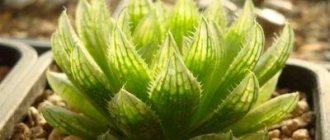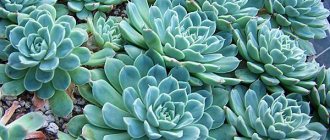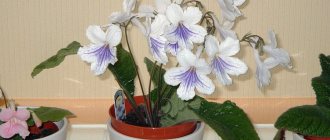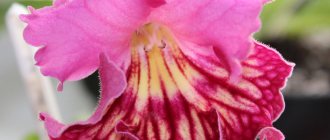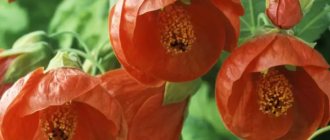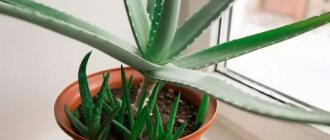Streptocarpus is a member of the Gesneriaceae , native to southern Africa, the island of Madagascar and Southeast Asia. Representatives of this genus are divided into xenophytic, growing in open clearings, tolerant of drought, and forest, growing in high humidity, under trees, where there is no access to direct sunlight. In its homeland, this plant can be found in tropical forests and on mountain slopes.
Streptocarpus is loved by many gardeners due to its many advantages, among which it is necessary to note its unpretentiousness, lush and long-lasting flowering, easy propagation, which even a novice gardener can cope with.
Thanks to the work of breeders, today on store shelves we can see many varieties of streptocarpus, whose colors amaze the imagination of even a sophisticated florist , and the size of the flowers can even reach the size of gloxinia.
Streptocarpus: description and features
Streptocarpus is a herbaceous perennial from the Genseriaceae family. In beauty and grace, this flower competes with Saintpaulia (Uzambara violet), and in ease of care it is significantly ahead of it. It grows wild in Asia and Africa.
Brief description of streptocarpus:
- Stem. Rosette plant. The length and thickness of the stems depends on the variety. There are plants with very short stems, and others with long and thin ones.
- Leaves. Lanceolate, elongated, heavily pubescent. They converge into a socket. There are varieties with leaves reaching 30 cm in length. The edges are smooth or wavy. Color - from pale green to bright emerald hue. The number of leaves is from one to several pieces.
- Flowers. Single or collected in a bun. They grow from the axils of leaves. There are semi-double or terry. In diameter, depending on the variety, it is 2-9 cm. The smaller the flowers, the more there are on the plant. There are varieties with one giant flower.
The flower got its name because of its unusual fruits; translated from Greek, “streptocarpus” means “twisted fruits.”
Streptocarpus species
In nature, this tenacious plant with delicate flowers grows in mountains and tropical forests. Here, botanists managed to count about 140 varieties of streptocarpus, among which there are xerophytes - plants that can survive without water.
Florists distinguish three types of streptocarpus:
- Unifoliate. They have only one leaf blade. But it grows very long - up to 100 cm. The width of the leaf is up to 60 cm. As it grows, 2 more leaves appear, but they do not grow - they are in an embryonic state.
- Rosettes. The most common type among gardeners. They are distinguished by large inflorescences located on short stems-peduncles that grow from a rosette.
- Stem. Abundantly flowering plants with small inflorescences. They do not require large areas and grow well indoors.
The best varieties of streptocarpus
Breeders have bred dozens of varieties of streptocarpus, which are united by one common quality - they are all very unpretentious and can bloom all summer long.
Popular varieties:
- Chick. On medium-length stems there are lemon inflorescences with wavy, ruffle-like edges. Blue stripes emanate from the center of the flower.
- Pink Dreams. A plant with long and thin peduncles and a small rosette. The leaves are elliptical in shape, dark green in color. The flowers are pale pink, the edges of the petals are corrugated. The petals located below are covered with a fine crimson mesh.
- Caramel. This variety has elongated, elliptical leaves. The peduncles are low, collected in a compact rosette. The flowers are painted in two colors - pink and caramel-cream. The ruffled petals have purple stripes.
- Hypnosis. The flowers are located on a middle stem emanating from a rosette. The inflorescences are large and consist of ruffled purple-black petals covered with splashes of red and violet. White “rays” emanate from the light middle. The leaves are long, the edges are wavy, the color is dark green.
- Black Swan. A plant with a small rosette and oval leaves. The stems are low, the flowers are large, velvety, dark purple. The petals are wavy and look like ruffles.
- Shake. This variety has compact rosettes and double, dark burgundy inflorescences. There are small white spots and streaks on the petals. The stems-peduncles are long, each of them has from 1 to 3 flowers. The leaves are wide and soft.
Types of streptocarpus with photos and names
Streptocarpus candidus
This plant is a rosette plant, its wrinkled leaf plates reach about 15 centimeters in width and up to 45 centimeters in length. The flowering is lush. On the surface of white flowers, up to 25 mm in length, there are purple lines. There are purple stripes on the lower lip of the flower, and dots of the same shade in the throat.
Streptocarpus grandis
This plant has only one leaf blade, the width of which is about 0.3 m, and the length is up to 0.4 m. The height of the stem is about 50 cm, in its upper part grows a racemose inflorescence consisting of flowers with a pale purple corolla , and the pharynx is of a darker shade, the color of the lower lip is white.
Streptocarpus cyaneus
This plant is a rosette plant, its stem height is about 15 centimeters. Pink flowers grow on the stem, collected in bunches of 2 pieces. The center of the flower is yellow, while on the surface of the throat there are stripes and dots of purple color.
Streptocarpus wendlandii
This species is native to South Africa. The bush grows a single leaf plate, the length of which is up to 100 cm, and the width is slightly more than 50 cm; on its dark green surface there are veins of a paler shade. Five-centimeter flowers grow from the axils of a relatively long peduncle, the color of the corolla is dark purple, and there are white stripes on the surface of the pharynx.
Streptocarpus glandulosissimus
In nature, this species is found in the Ulugur and Uzambara mountains. The stem length is about 15 centimeters. The flowers can be colored in various shades from dark blue to purple.
Streptocarpus johannis
The stem of such a rosette plant is straight. The width of the leaf plates is about 10 centimeters, and their length is up to 50 centimeters. About 30 bluish-purple, almost twenty-millimeter flowers grow on the stem.
King Streptocarpus (Streptocarpus rexii)
This rosette plant is native to South Africa. There is pubescence on the surface of the elongated lanceolate leaf plates; their width is about 5 centimeters and their length is up to 25 centimeters. Axillary flowers can be single or collected in bunches of 2 pieces; the length of the funnel-shaped corolla is about 50 mm, and its diameter reaches about 25 mm. The color of the flowers is pale lavender, and there are purple stripes on the surface of the throat and corolla tube. This species is characterized by long and bright flowering.
Streptocarpus polyanthus
This single-leaf species comes from South Africa. The length of the densely pubescent leaf plate is about 0.3 m. Forty-millimeter pale blue flowers with a yellow center grow on high peduncles. The color of its throat is paler and somewhat similar to a keyhole.
Streptocarpus primulifolius
This rosette plant produces no more than 4 flowers. The color of the flowers varies from white to pale purple, and there are dots and stripes on their surface. The height of the stem is about 25 centimeters.
Streptocarpus saxorum
In nature, this plant is found in the mountains of the tropical zones in eastern Africa at an altitude of more than 1000 meters above sea level. The length of the hanging stems is about 50 cm. The foliage on the stem is located opposite. The bluish slightly downward-sloping flowers are similar to Saintpaulia flowers.
Growing streptocarpus at home
Flowering and development of streptocarpus depends on growing conditions. In order for a flower to bloom magnificently, it needs certain soil and temperature conditions with a certain level of humidity.
Soil selection
Soil requirements:
- Good air permeability, looseness and porosity. Oxygen must flow freely to the roots, otherwise the plant will lag in growth and die.
- Moderate acidity – pH level 6.5-6.9.
The best solution is to purchase a ready-made substrate for Saintpaulias with high-moor peat. And add baking powder to it - perlite. You cannot dilute the substrate with a vermiculitor - it can cause acidification of the soil.
You can prepare soil for streptocarpus yourself from:
- deciduous soil;
- high peat;
- crushed bark;
- sand.
All ingredients are taken in equal parts.
Choosing a pot
Streptocarpus has well-developed surface roots, so it needs a wide container of low height. A drainage layer of pebbles, expanded clay or broken ceramics is placed at the bottom. The pot should have drainage holes.
For young plants, take pots with a diameter of 8 cm. When replanting streptocarpus, as it grows, the size of the pots is increased by 2 cm each time, reaching 12 cm. There is no point in planting this flower in pots that are too large.
Instead of replanting, rejuvenation is practiced - the plant is dug up and planted.
Lighting, temperature and humidity
Streptocarpus requirements for growing conditions:
- Lighting. Grows and blooms well in bright, diffused light. Does not like direct sunlight - they can burn the foliage. In winter, pots are placed on southern windows, in other seasons - on western or eastern windows. The plant is not placed on northern windows. To help plants grow and develop better, turn on lamps - fluorescent or LED. They are placed at a distance of 20 cm from the plant. The optimal illumination level is 5-6 thousand lux.
- Temperature. Optimal values are from +15 to +25 °C. The plant does not tolerate heat well. At +32-35 °C its root system may die. In winter, the temperature should be minimal – +15 °C.
- Humidity. When humidity is low, the tips of the plant's leaves dry out. Dried leaves are trimmed and the flowers are sprayed with a spray bottle.
Unlike violets, streptocarpus are not afraid of drafts; they can be displayed on balconies and verandas.
Landing
The technology for planting streptocarpus depends on the planting material. Most often, a flower is purchased for the first time as a baby - in specialized stores or at flower exhibitions.
The baby grows in a small glass; when it fills its entire volume with roots, transplant the plant into a pot. But there is no need to wait until the plant produces its first flower - there is no need for it to waste energy before replanting.
Planting streptocarpus:
- Prepare a small pot. Place a drainage layer of expanded clay or pebbles, and a universal flower substrate on top.
- Water the plant you are planting so that its roots can be easily removed from the planting container.
- Shake off the soil from the root collar, and shorten the long leaves - cut with scissors.
- Plant the plant in a new pot, trying to straighten the rosette - if it is slightly skewed. Young shoots should look straight up. Do not bury the growing point in the ground.
- Water the plant and place it in a window, but not in a south-facing window, to avoid direct sunlight.
Growing and caring for streptocarpus at home
The representative of the Gesneriaceae family is not picky, so caring for it is absolutely simple. The advantages of this guest from the subtropics or tropics include a long flowering period, which, with good lighting, lasts almost a whole year. Caring for streptocarpus at home will become a pleasure, and then on flower forums you will be proud to share photos of your favorite flower.
How to choose a pot and soil for streptocarpus
There are no problems with a pot - select a small container with a small depth and sufficient width. A drainage layer must be laid on the bottom. Loose porous soil is suitable for the plant. The ideal soil for violets will be with the addition of a small portion of peat.
Air temperature and lighting
Place the plant in a well-lit place without direct sunlight. The flower will not be happy with drafts - it is better to maintain the air temperature in the warm season at +20...+25°C, and in the cold season - +14...+18°C.
Choose east or west windows to place the flower.
The sun's rays negatively affect both flowering and the condition of the leaves. However, without good lighting, the leaves will not be able to fully develop.
Watering and spraying, fertilizing
As soon as the top layer of soil dries out, it is time for the next watering. The water must correspond to the air temperature and settle properly. If you over-water, the roots will begin to rot. The same negative consequences await the unlucky gardener if water gets inside the leaf rosette. You need to water slowly right under the leaves, or even better, pour water into the pan. The plant requires tropical humidity, with complete reluctance to be sprayed with water. Therefore, they spray the air next to the flower or place moss in a tray.
How to choose a support for a flower
Varieties with long peduncles reaching 50 cm have difficulty supporting large inflorescences, and if the stems are weak, the flowers hang in a drooping cluster. Any stick can be used as a support, or convenient plastic holders can be purchased.
A beautiful support serves as an additional decorative element
What to do if streptocarpus does not bloom
The streptocarpus flower can please with such bright funnel-shaped inflorescences only with sufficient lighting. The photo below shows a plant that is illuminated at least 14 hours a day.
An abundance of light and at the same time direct sunlight that does not reach the plant promote flowering
In order to admire flowers in winter, the plant needs to be illuminated.
How to care for streptocarpus in winter
The plant does not go to rest, however, keeping it at elevated temperatures and abundant watering will destroy the flower. In winter, watering is reduced - the plant requires less moisture, but you should not overdry it. To help, we offer a video on caring for streptocarpus at home:
Reproduction of streptocarpus
Streptocarpus is propagated by different methods - cuttings, leaves, seeds and dividing the bush. Every flower lover chooses a propagation option, taking into account the characteristics of the variety or his own preferences. Let's take a closer look at each method.
Leaf
Few plants can be propagated by leaves, and Streptocarpus is one of them. Leaves are purchased from reliable suppliers of planting material or cut from an adult plant.
Elastic and fresh leaves are chosen for propagation. Freshly cut, they can be planted immediately. Purchased leaves - if they are wilted, leave them in water for 3-4 hours.
Stages of leaf propagation:
- Cut the leaf so that it has a dense stalk.
- Place the leaf in a hole made in a peat tablet, or plant it in a pot with fertile soil - it is prepared from peat, perlite and sphangum (3: 1: 1).
- Water the soil with potassium permanganate and cover the pot with something transparent. Remove the cover regularly to ventilate leafy seedlings and eliminate condensation.
The leaves will take root after a month and a half. The leaf begins to develop micro-leaves – “babies”. Each of them can become an independent plant - just transplant it into a separate container.
To obtain a large amount of planting material, the leaf is cut into several parts, each of which must have a middle stalk.
Streptocarpus leaves can simply be placed in water - they will take root, and then they are transplanted into the ground.
Useful tips for propagating a flower by leaf are given in the video below:
A fragment of a sheet
If you only got one streptocarpus leaf, you can also propagate the plant you like. One piece of leaf is enough to grow a plant.
Reproduction by leaf fragment:
- Cut the leaf into pieces 3-5 cm long. You need fragments from the middle of the leaf - discard the top, it will wither and will not produce children.
- Prepare the rooting mixture – it should be as light as possible. You can mix the substrate for violets with vermiculite (1:1).
- Powder the bottom cut of the leaf with coal and bury it 0.5 cm into the soil.
- Water the plantings with a small amount of water. Subsequently, water the propagated streptocarpus from a spray bottle. But don’t overdo it, it’s better to dry it a little than to over-moisten it. Excess moisture will cause leaf fragments to rot.
- Keep the "kindergarten" in a warm, well-lit place, but not in direct sunlight.
In 1.5-2 months the babies will appear - these are already independent plants. When they have 2-3 leaves, they can be transplanted into a separate container.
Handle
Streptocarpus cuttings do not take root in water - they quickly rot. They must be planted immediately in the substrate.
Planting cuttings:
- Fill the glasses with a mixture of peat, perlite and sphagnum moss (3:1:1). Or prepare peat tablets - they need to be soaked in warm water.
- Treat the cut with a root formation stimulator.
- Cut off the top part of the leaf, and strengthen the remaining cuttings in a peat tablet or in a glass with substrate.
- Water the soil with a solution of potassium permanganate.
- Place the tablets/cups in a greenhouse or plastic container with a lid. Place the plantings in a well-lit place.
- Ventilate the container regularly.
Babies on cuttings will appear in 1-1.5 months. When the leaves of the children grow to 2 cm, you can transplant them into separate pots.
Cluster division
Mature plants are most easily propagated by division. This method allows you to quickly get a new flowering streptocarpus. Another advantage of the method is the renewal of an old flower.
Step-by-step instruction:
- Remove the flower from the pot. Shake the soil off the roots. Divide the roots into several parts - each should have at least one leaf. Separate the roots carefully; you can use a sharp knife. One adult plant is usually divided into 2-3 parts.
- Take charcoal powder and sprinkle it on the incision areas - this is necessary for disinfection.
- Choose a wide pot. Pour a 1 cm thick drainage layer into it, and then fertile, loose soil.
- Make a hole in the soil and lower one of the cuttings into it. Each part of the bush needs a separate pot.
- Fill the roots with soil and compact it with your hands.
- Water the flower with a weak solution of potassium permanganate for disinfection. This event prevents the appearance of fungi and root rotting.
- Cover the pots with the planted cuttings with film, which you remove daily to ventilate the plantings and remove condensation.
Rooting of the cuttings occurs in about 2 weeks.
Streptocarpus, although perennials, lose their attractiveness in the third year of life. To prolong the flowering state, the bushes are renewed by dividing the rhizome into parts.
Seeds
The flower is propagated by seeds only by experienced gardeners. Disadvantages of the method:
- A lot of time is spent - more than six months pass from the moment of planting to the appearance of flowers.
- Varietal characteristics may be lost.
Stages of propagation by seeds:
- When the plant fades and the seeds are ripe, tear off the inflorescences and let them dry completely. Remove the dried seeds from the seed pods.
- Prepare a container for sowing. Place a drainage layer of expanded clay into a low and wide container. Make holes in the bottom if there are none. Pour fertile substrate over the drainage.
- Scatter the seeds over the leveled soil and spray them with a weak solution of potassium permanganate from a spray bottle.
- Cover the crops with transparent film and place in a warm place.
- As soon as the shoots appear, ventilate the mini-greenhouse to remove any condensation that forms.
- After 10 days, remove the cover. Water the seedlings with a spray bottle. Make sure there is good lighting and maintain a temperature of at least +22 °C.
- When the seedlings get stronger, plant them in separate pots. The first flowers will appear after 10 months.
The following video shows the stages of growing streptocarpus from seeds:
How does Streptocarpus reproduce?
A gorgeous flower reproduces literally with any part of it - the craving for continuation of life is so strong in it. They use several breeding opportunities.
How to grow streptocarpus from seeds
Seeds are usually used by breeders for propagation purposes. But the average hobbyist has every chance of getting a new plant and carrying out the usual care and cultivation of streptocarpus: just sow the seeds on moist, loose soil or a mixture of peat and perlite. Since the seeds are tiny, you can mix them with sand for convenience. You need to spray the crops from above with a spray bottle and cover the container with polyethylene. For initial development, seeds require greenhouse conditions. The containers are placed in light and heat (at least +22°C).
In a couple of weeks, the gardener will be pleased with a brush of small sprouts. Observe the formation of condensation - the greenhouse needs ventilation. Picking is carried out in the usual manner when two true leaves appear. The seedlings are moved into separate pots filled with drainage, three parts peat, two parts moss or leaf soil and part perlite. This way you can easily grow any streptocarpus from seeds at home.
Reproduction of streptocarpus by leaf
If you want to propagate streptocarpus from a leaf, it is preferable to take parts of leaves from a faded plant: now we will tell you how to do this.
| Illustration | Description of action |
| The leaf is held with one hand, and the other is cut off with a sharp new blade closer to the base of the petiole. The cut of the plant is sprinkled with crushed charcoal. | |
| The sheet is laid with the wrong side up. | |
| The tip of the leaf is cut off with a knife; it is not needed. The remaining fragments of the leaf will serve as excellent material for the propagation of streptocarpus. | |
| The leaf plate is cut into equal parts of 4-5 cm each. Another option: cut off 4 cm from the top and bottom edges, and cut the sheet along the axial rod. | |
| Soil for Saintpaulia is placed in a plastic container and a groove is made in it. | |
| A leaf plate is inserted into the furrow with the cut cut into the soil. The earth is moistened and the container is covered with transparent material. | |
| Do the same with short leaf blades. |
You can germinate a leaf plate in a glass of water - the cut is lowered into water no more than 1 cm, covering the glass with a transparent bag. It is important to ventilate the mini-greenhouse regularly.
How to propagate streptocarpus by dividing a bush
Dividing a bush is a fairly simple procedure. The plant is taken out of the container, removing excess soil. It is important to carefully untangle the roots. The rosette is carefully examined and the junction of the baby and the mother plant is found. An incision is made at this point with a sharp, disinfected object. Do not forget about crushed charcoal as an antiseptic for cuts. Caring for the planted babies consists of maintaining the humidity level using a transparent cap for the first 3-5 days.
Rules for caring for streptocarpus
If you provide streptocarpus with good care, it will develop well and bloom luxuriantly. This plant is viable and undemanding; the main thing is to replant and rejuvenate it in time.
Watering
Streptocarpus has few leaves, so it evaporates little moisture. Irrigation features:
- In spring and summer, moisture is systematic, but moderate. The soil should not dry out.
- In October, watering begins to be reduced, in winter it becomes completely scarce, and yet the substrate should not dry out.
- Water the plant with settled water at room temperature. It must sit for at least 24 hours.
- Water is poured away from the stem - along the edges of the pot.
- Overmoistening the soil is unacceptable - the roots may rot.
Feeding
The plant is fed carefully; if you overfeed it, the flowering will be less abundant. Features of feeding streptocarpus:
- During the growing season, the plant is fertilized 3-4 times.
- The best feeding is complex mineral fertilizer.
- The plant is given a 50% dose of fertilizer from the rate specified by the manufacturer.
- Use fertilizers for flowering plants.
- Apply fertilizing during watering.
Transfer
Young plants have to be replanted periodically. It is recommended to do this every year. I replant adult plants every 3-4 years. Transplantation is best done in the spring.
Pots for transplantation are filled with substrate. The soil mixture for young plants should not contain turf soil.
Sequence of streptocarpus transplantation:
- Take a pot with a diameter 2 cm larger than the previous one. Place expanded clay or foam balls on the bottom.
- Pour the substrate or your own prepared soil mixture into the pot and water it. Make a hole in the center.
- Take the bush out of the old pot, shake it off a little of the soil and place it in a new pot, in a pre-made hole. The plant should fit in it so that it does not need to be deepened.
- Add substrate if necessary. Firm gently with your hand and water again.
After a week, the transplanted plant can be moved to a greenhouse with good ventilation.
Rejuvenation
If an adult plant is transplanted, its rejuvenation is carried out at the same time:
- Cut off about a third of the roots with scissors.
- Remove all lower leaves that are damaged or dried out.
- Deepen the bush so that part of its stem, which was exposed after the leaves were torn off, sinks into the soil.
During a rejuvenating transplant, the plant is transferred to a pot of similar capacity - there is no need to take a larger pot. It is recommended to transplant the rejuvenated streptocarpus into a new pot, or at least boil the old one.
Watch a useful video about transplantation and rejuvenation of streptocarpus:
Bloom
Streptocarpus blooms from spring to autumn, in winter there is a dormant period that passes without shedding foliage. Bell-shaped flowers can be white, red, blue, yellow, purple. Hybrid varieties have inflorescences painted in 2-3 colors.
Trimming
Streptocarpus does not need special pruning. But in order to maintain its decorative effect, it is necessary to remove withered leaves, dried stems and inflorescences in a timely manner. In favorable conditions, the plant can bloom in winter.
Rest period
Streptocarpus is not a flower that necessarily needs winter dormancy. If the grower does not want to bother with additional lighting and monitor growing conditions in winter, you can send the plant to “winter.”
Conditions for the winter period:
- The plant is transferred to a room with a temperature of no more than +18-20 °C.
- Watering is kept to a minimum; the soil is moistened only when it is completely dry.
- Lighting – 7-8 hours. The plant is not placed in the dark.
- Feeding is stopped in winter.
Streptocarpus is removed from its dormant state at the end of February - during this period the plant’s vitality is activated. The flower is transplanted into a new pot and transferred to a warmer room.
If the flower is mature, you can also divide it into parts during transplantation. A month after transplantation, the flower begins to be fed and watered more often.
Selection of support
Among streptocarpus there are varieties with long peduncles - up to 50 cm. It is difficult for stems of such length to hold inflorescences. Thin shoots bend and flowers droop down. In this case, the plant needs support - any stick or special plastic holders will do.
Caring for streptocarpus at home. Details
The opinions of flower growers regarding the whimsical nature of the plant do not coincide. Some consider its cultivation a simple matter, accessible even to beginners. But in order for a flower to really please with its appearance and beautiful flowering, you need to create certain conditions for it and constantly pay attention.
Streptocarpus flowering
The plant has many varieties and hybrids, differing in the shape of the flowers and their color, from white to purple, with various inclusions and stains.
A combination of several colors is possible. The flowers are shaped like tubular bells. The smaller they are, the more inflorescences are formed and the more abundant the flowering. One peduncle emerges from the leaf axil, on which, depending on the variety, can bloom from several flowers to several dozen. The size of the flower corolla in some varieties reaches 8-10 cm. As a result of flowering, a seed capsule containing many small seeds is formed. Streptocarpus flower is rarely grown for seeds at home.
Attention! To ensure that the plant has an attractive appearance and does not become depleted, fading inflorescences are cut off without waiting for the capsule to form.
Temperature
The flower reacts poorly to high temperatures, despite its African origin. It is comfortable at a temperature of 20 to 25 °C on a windowsill or balcony protected from direct sunlight. The minimum permissible air temperature in winter is 14-15° C.
Spraying
Dry indoor air negatively affects the condition of leaves and flowering, so it is necessary to use a humidifier or spray the air with a spray bottle.
When water gets on the leaves and flowers, streptocarpus loses its attractive appearance, so care at home is carried out by wiping the leaves with dry wipes. Pallets with wet expanded clay, pebbles, and moss, which are installed in close proximity to the pots, are also used as humidifiers.
Lighting
For full flowering, the plant requires a lot of light and long days. But the sunlight must be diffused so that the leaves do not get burned. On the north side of the house, lighting may be insufficient and additional lighting will be required with lamps. Western and eastern window sills are best suited for growing.
Watering
Domestic streptocarpus requires regular, moderate watering with well-settled warm water.
Excessive moisture leads to rotting and even death of the plant, so it is better to water less than overwater. In summer, the frequency of watering is 2 times a week, in winter - no more than every 8-10 days. At low air temperatures (15 °C and below), watering is stopped completely.
Soil for streptocarpus
The plant prefers light, loose, fertile soils with good air exchange. The easiest way is to buy ready-made balanced soil in a specialized store. You can prepare the mixture yourself in the following proportions:
- leaf soil - 2 parts;
- peat, sand, humus - 1 part each.
You can also mix equal parts of soil, peat and sphagnum moss. A mixture of peat, perlite and humus (5:2:1) is suitable for raising children.
Drainage materials must be poured onto the bottom of the pot.
Attention! All components of the mixtures, drainage and growing containers are disinfected by heating or a solution of potassium permanganate.
Feeding and fertilizer
Streptocarpus develops intensively and requires a lot of nutrients. At the initial stage, for the growth of a rosette of leaves, preference is given to nitrogen fertilizers; at the stage of laying flower stalks and during the flowering period, preference is given to phosphorus-potassium fertilizers.
Specialized stores offer complex preparations that are easiest to use. Fertilizing is combined with watering at intervals of 8-10 days and is carried out only in the spring and summer.
Pot size
When growing a flower by sowing seeds, seedlings in the phase of 2 true leaves are planted into free containers at a distance of 1.5-3.0 cm, and then the grown plants are transplanted into separate pots. Their size at the initial stage is 6-8 cm.
With each transplant, the pot is increased by a couple of centimeters. When grown in a container that is too large, increased growth of the rosette of leaves is observed and flowering slows down. For an adult plant, the volume of the pot should be at least 16 - 18 cm, shallow, since the root system is located superficially.
It is better to grow a flower in a ceramic pot, but it also feels good in a plastic one if there is drainage and proper watering.
Transplantation of streptocarpus
Streptocarpus can grow in one place for quite a long time, but by the 3rd year of life the rosette of leaves thickens, the plant becomes depleted, looks less attractive, blooms poorly, and loses its decorative effect.
Transplantation solves several problems:
- bush rejuvenation;
- reproduction;
- increasing the volume and quality of soil.
Rest period
Only mature, healthy specimens can bloom throughout the year, although without a rest break their appearance and flowering quality deteriorate. In winter, conditions for a dormant period are artificially created by reducing watering, lighting, stopping fertilizing and lowering the air temperature.
Trimming
For sanitary purposes, damaged and yellowed leaves and fading flower stalks are pruned. From adult bushes, small shoots that are not able to compete with developed vegetative organs are removed.
Diseases and pests
Streptocarpus has a lot of pests and diseases, the latter being mainly caused by poor agricultural practices, especially improper watering.
Streptocarpus diseases and control measures:
| Diseases | Symptoms | How to fight? |
| Root rot | Wilting of leaves due to waterlogging. | Take the plant out of the soil and cut off the damaged parts of the roots. Wash the remaining roots with potassium permanganate or fungicides. The plant is transplanted into a substrate for “young growth”. |
| Powdery mildew | The leaves become covered with white granular spots. | Spray with Fitosporin, and a week later with Epin. In case of severe damage, treat with Fundazol. |
Streptocarpus pests and control measures:
| Pests | Signs of defeat | How to fight? |
| Mealybug | The insect attacks leaves, the base of the bush and roots. The parasite, having settled on the surface of the plant, creates a white coating similar to cotton wool. | Spray with Aktara 2-3 times at weekly intervals. The solution is made according to the directions on the package. |
| Spider mite | Affects all green parts of the plant. It weakens it and can lead to drying out and death. | Treated with “Fitoverm” or “Kleschevit”. Spray 2 times at weekly intervals. |
Problems when growing streptocarpus
If you do not respond in time to the signals given by the plant, it will bloom poorly and may even die. Possible problems:
- Doesn't bloom. Streptocarpus stops flowering if it does not have enough light - this situation is often observed with short daylight hours. Artificial lighting must be installed.
- The leaves have withered. The reason may lie in lack of moisture. If the soil is wet, but the leaves are still dry, the roots are probably rotten. We need to save the plant by replanting it with leaves.
- The leaves and stems have turned yellow. The reason is low indoor humidity or sunburn.
- There are “rusty” spots on the leaves. The reason is an excess of fertilizers or excessive moisture.
Streptocarpus. Growing problems:
- Yellowing of foliage occurs when there is a lack of fertilizer in the soil or when exposed to direct sunlight.
- A rusty coating on the leaves appears when there is an excess of fertilizers in the soil and too much watering.
- Lethargy of foliage due to lack of watering.
- Drying of the tips of the leaves in dry indoor air and if the plant is cramped in the pot. Maybe it's time to divide the bush?
- The absence of flowering indicates that the daylight hours are not long enough. It should be 12-14 hours. Additional lighting is required.
Views: 865
Useful tips
Advice from experienced flower growers:
- Water streptocarpus using the wick method. A wick, such as a nylon cord, is dipped in water, and another is placed in a pot with a plant.
- Regularly trim old leaves - this will activate the formation of new leaves and flower buds.
- Instead of peat, which is usually present in the substrate, you can take coconut fiber. Some gardeners advise adding moss, but it can acidify the soil; it is better to spread sphagnum on the surface of the soil.
Reviews from gardeners
Evelina, 40 years old, amateur florist, Kislovodsk. My streptocarpus bloom in early March and bloom until the end of November. These flowers quickly became my favorites - they have very delicate and beautiful buds of various colors. In winter, plants shed their largest leaves and rest. During this period, I water them moderately. And in the spring, flowering begins again. One plant has from 5 to 20 flowers, their number depends on the variety.
Victoria, 25 years old, gardener, Lipetsk region. Streptocarpus appeared in my home garden not long ago. Similar to Saintpaulia, but the flowers are more elegant and varied. Maximum splendor is achieved in the second or third year of life. They bloom especially profusely in summer. I am going to create a whole collection of these flowers - fortunately there are many varieties, with flowers of various colors.
To grow streptocarpus at home, no special knowledge or skills are required. The flower's agricultural technology is simple and accessible, and if you carry out all the necessary measures on time, this plant will delight you with long and abundant flowering.
About caring for Streptocarpus:
Streptocarpus kirkii.
Temperature : Streptocarpus is not very picky about temperature and does well in a room temperature range of 20 to 25 °C. It must be taken into account that the plant does not tolerate heat well in summer; it must be protected from too high temperatures and the steam room of a south window. In winter, it will be useful for Streptocarpus to slightly lower the temperature to 10-14 °C, which will allow the plant to rest, grow the root system and green mass.
Lighting: The plant is light-loving, but does not tolerate direct sunlight. It grows well both in regular and artificial lighting. In the summer, when choosing a window for streptocarpus, remember about its dislike of extreme heat and create shading on southern windows from scorching rays; they develop well on eastern and western windows. In winter, the plant may suffer from a lack of lighting, so for this period, give preference only to a south-facing window and if you want to enjoy flowering, add additional lighting with fluorescent lamps, extending the daylight hours to 14 hours.
Watering: It is necessary to carry out soft, settled water at room temperature. Streptocarpus is very sensitive to hard water and overwatering. The main rule when watering this plant is that it is better not to top it up than to overwater it, since streptocarpus easily tolerates some overdrying and easily returns the turgor of the leaves, but the plant will have to be revived from overwatering and rotting of the roots.
Streptocarpus division.
Air humidity: Streptocarpus easily tolerates dry indoor air, but will not refuse to occasionally indulge in spraying the leaves with a light mist.
Flowering: The plant pleases with its flowering in long daylight hours of at least 14 hours. In winter, lovers of streptocarpus flowering use fluorescent lamps for additional illumination. Old peduncles and leaves must be removed in time so that they do not deplete the plant and shorten the flowering time.
Fertilizer: Apply once a week throughout the summer and spring. In winter, if the plant has a dormant period (no additional lighting), fertilizers are not applied. Young specimens are fertilized with a solution of nitrogen + phosphorus + potassium, but adult plants, before flowering, need a solution of phosphorus + potassium.
Plant rejuvenation: This plant tends to quickly lose its attractiveness. Already in the 3rd year of life, the appearance of the plant is not so decorative, and the flowering becomes small and sparse. Rejuvenation of streptocarpus is carried out by dividing the bush into parts.
Soil: Streptocarpus grows and blooms well in violet soil, to which you can also add perlite. Plant the plants in low but wide plastic pots. Clay pots are not suitable for this representative of the Gesneriaceae, since the roots of the streptocarpus cling to the pores of the pot, and during replanting this can lead to damage to the root system and the plant itself when trying to carefully separate them. The root system of streptocarpus is not large, but it develops very quickly and quickly fills the entire volume of the pot.
Streptocarpus caulescens.
Transplantation: Carried out annually by transshipment at the end of winter. The pot should be about 2 cm larger than the previous one. At the bottom of the pot there should be a good layer of expanded clay, at least 2 cm.
Reproduction: You can read more about reproduction in a separate publication on Reproduction of Streptocarpus. Basic methods.
Pests: Streptocarpus is resistant to pests, but if not properly cared for, it can be attacked by thrips and aphids.
